Planet Earth Blu-ray Movie
HomePlanet Earth Blu-ray Movie 
The Complete Series | Special EditionBBC | 2006 | 537 min | Not rated | Oct 04, 2011
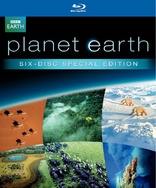
Movie rating
8.9 | / 10 |
Blu-ray rating
| Users | 5.0 | |
| Reviewer | 4.5 | |
| Overall | 4.5 |
Overview
Planet Earth (2006)
With an unprecedented production budget of $25 million, and from the makers of Blue Planet: Seas of Life, comes the epic story of life on Earth. Five years in production, over 2,000 days in the field, using 40 cameramen filming across 200 locations, shot entirely in high definition, this is the ultimate portrait of our planet. A stunning television experience that captures rare action, impossible locations and intimate moments with our planet's best-loved, wildest and most elusive creatures. From the highest mountains to the deepest rivers, this blockbuster series takes you on an unforgettable journey through the daily struggle for survival in Earth's most extreme habitats. Planet Earth takes you to places you have never seen before, to experience sights and sounds you may never experience anywhere else.
Narrator: David Attenborough, Nikolay Drozdov, Thomas Anguti JohnstonDirector: Alastair Fothergill, Mark Linfield
| Documentary | Uncertain |
| Nature | Uncertain |
Specifications
Video
Video codec: MPEG-4 AVC
Video resolution: 1080i
Aspect ratio: 1.78:1
Original aspect ratio: 1.78:1
Audio
English: DTS-HD HR 5.1
English: Dolby Digital 5.1 (448 kbps)
Dolby Digital track is an isolated score track
Subtitles
English SDH, French, Spanish
Discs
50GB Blu-ray Disc
Six-disc set (6 BDs)
Playback
Region free
Review
Rating summary
| Movie | 4.5 | |
| Video | 4.0 | |
| Audio | 4.0 | |
| Extras | 4.5 | |
| Overall | 4.5 |
Planet Earth Blu-ray Movie Review
"Being in touch with the natural world is crucial..."
Reviewed by Kenneth Brown September 30, 2011Planet Earth not only helped sell second generation adopters on the wonders of high definition, it remains one of the most popular Blu-ray releases to date. If you have a Blu-ray collection, chances are the original 2007 release of Planet Earth is sitting on one of your shelves. It's no mystery either. The eleven-episode nature documentary series boasts some of the most gorgeous, jaw-dropping imagery to ever grace the screen and offers viewers an opportunity to see things they would never otherwise see, to learn about remote locations and exotic animal they would never otherwise know existed, and to experience the the majesty and fury of the planet in ways they never thought possible. Rather than dive into the series itself, though, this review will focus on the differences between the 6-disc 2011 Special Edition release of Planet Earth and its 4-disc 2007 predecessor. The quality of the series almost goes without saying. The quality of its upcoming re-issue... well, read on.

Planet Earth Blu-ray Movie, Video Quality 
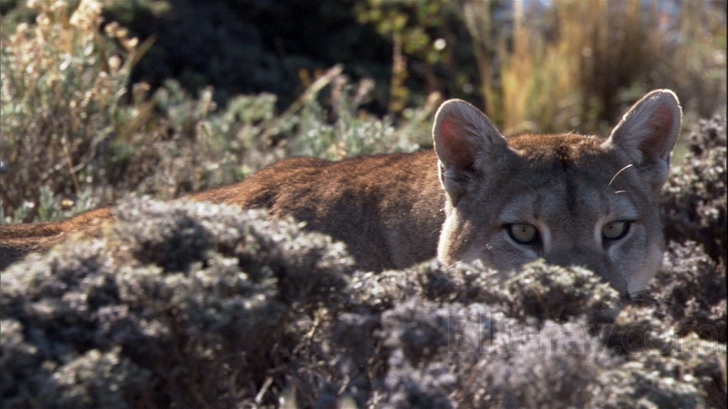
The back cover of Planet Earth touts "the greatest Blu-ray release of all time just got even better, newly encoded to take advantage of recent innovations in Blu-ray technology." All well and good; vague but promising. I was, suffice it to say, genuinely excited. Why, then, the studio chose to present the series in 1080i rather than 1080p is a bit of mystery, especially when the original 2007 Warner/BBC release of Planet Earth is presented in 1080p. Disc space? Some other limitation? It isn't entirely clear. What is clear is that, interlaced or no, BBC Video's 1080i/AVC MPEG-4 encode impresses. That said, Planet Earth is beginning to show some signs of age, more recent BBC nature documentaries are more crisp and colorful, and the new encode suffers from several issues, minor as each one may be.
First, the good. (Or great in most cases.) Colors don't always erupt off the screen in every shot and segment, but the series still comes alive with lifelike hues, beautiful earthtones, pleasing contrast and reasonably deep (albeit imperfect) black levels. Stark frozen tundra whites, sweltering desert oranges, brisk ocean blues, vibrant jungle flora, smoldering volcanic reds and flourishing forest greens, all drawn from the Natural History Unit's stunning photography. Detail is also notable, just not reference-quality. (Don't be so quick to lay blame solely at the feet of the new encode or its 1080i presentation, though. The 2007 1080p release isn't as immaculate as it once seemed. Technically speaking, that is.) Textures are nicely resolved (despite numerous inconsistencies from scene to scene and episode to episode); edge definition is sharp and satisfying throughout (despite the presence of intermittent ringing and edge halos); and bristling fur, sleek scales, smooth skin, ruffled feathers, tangled underbrush, canopy leaves and branches, and wind-swept snow and sand still leave their mark (despite some softness inherent to the series' photography and source, as well as a variety of unavoidable anomalies that appear beneath the ocean and in the darkest corners of the planet).
Differences between the 2011 Special Edition presentation and its 2007 counterpart aren't all that apparent, regardless of what innovations and technologies were used to produce the new encode. I'm sure a committed screenshot scientist somewhere will pick out every pixel and primary that exhibits a measure of gain or loss, but when the episodes are barreling along, the 2011 and 2007 video experiences are, for the most part, comparable. Noise is a bigger issue this time around, be it ingrained noise courtesy of the photography, mosquito noise courtesy of the encode, or digital noise courtesy of a few largely negligible compression mishaps. By my estimation, it affects the 2011 release more than the original, but not to debilitating ends. (In early episodes of the Special Edition, hundreds-strong flocks of fleeing birds and herds of migrating beasts are occasionally swarmed by noise. Look closely if you must; you can't miss it.) Banding still pops up from time to time too, generally when the NHU cameras plunge beneath the waves, soar over mountains against the bright blue sky, or swim in deep waters with whales, sharks and creatures that lurk even further below the surface. But when it comes to banding, the new Special Edition actually bests the 2007 original. And then there's aliasing, which makes a round of (thankfully fleeting) appearances, albeit not enough to label it a problem of any sort.
The "i" in "1080i" will surely scare away some fans and leave others grumbling, but in motion, the 1080i encode isn't going to disappoint very many people. Comparisons between the 1080i and 1080p versions end in a near draw, although I will go on record as saying the 2007 1080p presentation still has an edge, particularly when it comes to wide shots teeming with fields of birds or beasts. Ultimately, anyone straddling the fence should focus on the real upgrades the Special Edition affords: a DTS-HD High Resolution 5.1 surround track and more than thirteen hours of special features and bonus documentaries.
Planet Earth Blu-ray Movie, Audio Quality 
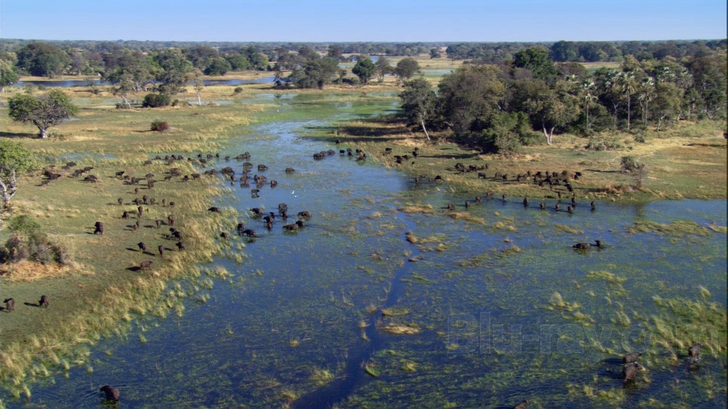
While previous releases of Planet Earth were hindered by lower bitrate Dolby Digital lossy audio, the 2011 Special Edition release boasts a strong (albeit still lossy) 2.0Mbps DTS-HD High Resolution 5.1 surround track. (Not to be confused with a full-fledged lossless DTS-HD Master Audio mix). Of course, David Attenborough's narration dominates each episode, so the vast majority of the improvements inherent to the High Resolution audio are only apparent when Attenborough pauses and allows the planet's enveloping soundscapes to surge forward. Not that anyone should expect much more. Rear speaker activity isn't overwhelming, but it isn't overbearing either. Waterfalls, thunder storms, raging rivers, bustling jungles and the cacophony of animal calls, insect noise and environmental ambience are clean and clear. Likewise, LFE output isn't earth-shaking, but it also doesn't overpower the soundstage. Throaty roars and thunderous stampedes are given ample support, dynamics are satisfying, and the mix strikes a welcome balance between the might and meekness of the world's most exotic locales. All the while, Attenborough's voice has real presence and the weight of his words, the gravity of his emphases, and the rich quality of his tone never falters. The resulting sonic experience isn't nearly as moving or immersive as the series' photography, but BBC's High Resolution mix is technically sound and bests its Planet Earth predecessors.
Planet Earth Blu-ray Movie, Special Features and Extras 
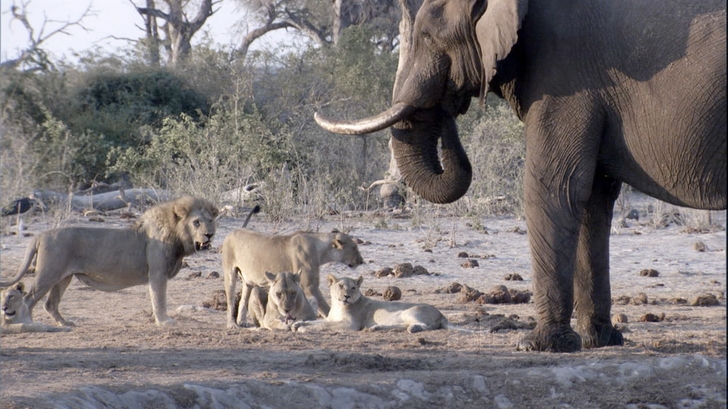
The other notable upgrade the 6-disc Special Edition release provides? Extras, extras, extras. Audio commentaries for five episodes, two and a half hours of behind-the-scenes production featurettes and materials, nearly six hours of secondary documentaries, and an isolated score option. Yes, some of the content is presented in standard definition. Yes, most of the featurettes and documentaries are presented with lossy Dolby Digital stereo mixes. And yes, six episodes go without a commentary. However, in the grand scheme of things, thirteen-plus hours of special features adds tremendous value to the set, and it's difficult to be too disappointed with such limited shortcomings. As for the packaging, Planet Earth's discs are housed in an attractive book that's a half-inch taller and a half-inch wider than a standard Blu-ray case. Inside, the book's six glossy cardboard pages hold the set's discs, snuggly but not tightly. (See the image at the top of this review for a closer look at the packaging.) It's a tad flimsy, I'll admit. Especially compared to the handsome, altogether sturdy packaging Fox has used for the Alien and Star Wars sets and HBO has used for releases like Deadwood and Rome. That said, I'll take more easily accessible discs any day of the week. A side-access slipcover is also included for good measure.
- Audio Commentaries (Discs 1-3): Five episode commentaries are available. On "Pole to Pole," producer Mark Linfield discusses the challenges of kicking off the series properly, provides an overview of the various locales and animal life that appears, details the editing and pacing decisions made before the show debuted, and the icy trials and bone-chilling tribulations the Planet Earth photographers and crew faced along the way. For "Mountains," Vanessa Berlowitz follows in Linfield's footsteps, albeit with a bit more spunk and spirit. Her track is more anecdotal -- easily the most anecdotal of the bunch, actually -- but it's just as engaging and informative as the others, not to mention one of the best commentaries in the set. Producer Huw Cordey delves into "Caves" and strikes a balance between Linfield's matter-of-fact dissection and Berlowitz's lively chat. Better still, he rarely takes a breath, making the most of his 49-minute reflection on the weeks and months he spent trekking beneath the surface of the planet. Producer Jonny Keeling tackles "Great Plains," but struggles, at least initially, compared to his colleagues. Ironically, like the Plains themselves, his commentary is quiet and empty at times; thankfully, his silences never last for very long. Keeling eventually proves to be as thorough as the other episode producers, weaving stories, production info and accounts of day-to-day obstacles and dangers with reserved passion. Finally, producer Mark Brownlow reads a pre-prepared series of thoughts of reflections, stumbling over some of his written words and disappearing for longer stretches than the other commentators. While he has plenty of interesting factoids to share, his is, by far, the most underwhelming track and the most difficult to sink into.
- Music Only Viewing Option (Discs 1-4): Each episode includes an isolated score, albeit by way of a 448kbps Dolby Digital stereo track. The option is appreciated and the music is as wonderful as ever, but the lack of DTS-HD HR music-only mixes is, as you might imagine, a disappointment.
- Planet Earth Diaries (Discs 1-4, SD, 107 minutes): Each episode is also accompanied by a candid eight to ten-minute production featurette that goes behind-the-scenes to put faces on the men and women responsible for capturing Planet Earth's breathtaking imagery. Needless to say, the crew didn't just point their cameras out of their hotel windows and shoot whatever wandered by. As an added bonus, five of the featurettes offer an optional commentary track; Linfield returns for "Pole to Pole," Berlowitz for "Mountains," Cordey for "Caves," Keeling for "Great Plains" and Brownlow for "Shallow Seas." (Both the featurettes and their commentaries are presented in Dolby Digital stereo.)
- Great Planet Earth Moments (Disc 4, HD, 46 minutes): Sir David Attenborough narrates "the high points and not-so-high points" of the 10-episode documentary series and its production, and revisits its most stunning vistas, arresting footage, daring photography and dazzling moments. Numerous interviews with key members of the crew are peppered throughout; so many interviews that labeling this bonus episode a "Greatest Hits Reel" would be a great disservice. Fans of the series will enjoy it as much as the set's "Planet Earth Diaries." (Presented in Dolby Digital stereo.)
- The Future: Saving Species (Disc 5, HD, 59 minutes): "There have been few natural history films like it. Planet Earth. What a world we live in, and what an experience it must have been to film it. So why have the production team come away with mixed emotions?" That's the question that drives the first of three additional documentaries housed on Disc Five. The answer is that for all the awe and wonder the Natural History Unit documentarians encountered, they encountered countless species on the verge of extinction, habitats on the verge of destruction, and societies steeped in apathy. But this isn't a lofty "ideas" doc. Like the series, it puts its boots in the mud, going to each region, hearing from native conversationalists (not just wealthy Westerners) and digs into the new approaches and sometimes radical efforts being made in conservation around the world.(Presented in Dolby Digital stereo.)
- The Future: Into the Wilderness (Disc 5, HD, 59 minutes): "Wilderness areas can be stunningly beautiful, and are certainly vital sanctuaries for wildlife. But are they even more than that? This program will explore the deeper importance of wilderness. It will ask how it serves us now, and why isn't just virgin territory waiting for an ever-expanding humanity to take it over." Like "Saving Species," "Into the Wilderness" examines the threat posed by population, the growing economy, and the manner in which humans use their wealth. If it's preachy, it delivers a compelling sermon; if it's sobering, it should be. Without pomp or circumstance, this second Disc Five documentary takes its time and keeps its passions in check, offering an engrossing study of the tipping balance between mankind and the wilderness at large without beating environmental war drums (too loudly) or providing a one-sided examination of the socioeconomic and geopolitical issues at the heart of the worldwide crisis. (Presented in Dolby Digital stereo.)
- The Future: Living Together (Disc 5, HD, 59 minutes): "This is a time when our planet is under assault like never before, and we are only beginning to realize how severe the consequences may be for the quality of our own lives and for the quality of our children's lives. For me, the only good news in this picture is that we also see glimmers of the solution. We can begin to see strategies that work. That we can begin to shift our economy so it works for conservation instead of against it." Rounding out Disc Five's three-part reality check, "Living Together" again poses a level-headed argument and makes a strong case for conservation. Through a series of blunt but captivating interviews, it tackles the disparity between civilization's fundamental needs and its startlingly suicidal tendencies to eliminate the life-giving sources of those needs. We need water to survive, yet it's in that same water supply that we dump our trash; we need food to thrive, yet we neglect the lands on which it grows; we need a balance to be maintained, yet we sit idly by as the agents of that balance go extinct. It's tough to watch but essential to understand, and "Living Together" does a fine job with a daunting message. (Presented in Dolby Digital stereo.)
- Snow Leopard: Beyond the Myth (Disc 6, HD, 49 minutes): Disc Six also offers a trio of bonus documentaries, but this time each one is smaller in scope. Up first is a fascinating introduction to the elusive snow leopard and its battle for survival in the mountains of Pakistan. Rather than follow a biologist or a wildlife photographer, though, it follows a journalist who's worked in and around Northern Pakistan for the last twenty years as he searches for snow leopards, studies their behavior and attempts to push past the various myths and misunderstandings surrounding the snow leopard and hone in on the true nature of the beast. (Presented with a DTS-HD High Resolution 5.1 surround track.)
- Secrets of the Maya Underworld (Disc 6, SD, 49 minutes): The Yucatan is a place of great mystery and even greater underground intrigue, and modern explorers have found something in the Maya underworld that, as narrator Simon MacCorkindale puts it, "has changed the way we understand the Yucatan forever." However, "Secrets of the Maya Underworld" doesn't have the same hook as many of the other documentaries in the set. It plays things too close to the chest and avoids mentioning what sorts of Yucatan-altering discoveries lie in wait. Don't get me wrong, it makes vague promises that mention amazing revelations, and it eventually delivers, but it takes twenty minutes to get there. It's still worth watching, mind you. I would just exhaust all the other extras before turning to "Secrets of the Maya Underworld." (Presented in Dolby Digital stereo.)
- Elephant Nomads of the Namib Desert (Disc 6, HD, 49 minutes): I don't know what it is about elephants -- maybe it isn't, maybe it's just the quality of Disc Six's third bonus documentary -- but watching the massive mammals lord over the desert, free from poachers, was one of the most extraordinary hours I spent on my return trip to Planet Earth. "Elephant Nomads of the Namib Desert" is a majestic and engrossing study of the elephants and their families, the protection the older members provide their calves, the aggression of wandering bulls, the struggle to find food as the seasons change, and the plights of several individual elephants. (Presented in Dolby Digital stereo.)
- Frozen Planet Sneak Peek (Disc 6, HD, 13 minutes): An extended preview of Frozen Planet, the upcoming seven-part nature documentary series co-produced by the BBC and the Discovery Channel. I'm excited. Who's with me?
Planet Earth Blu-ray Movie, Overall Score and Recommendation 
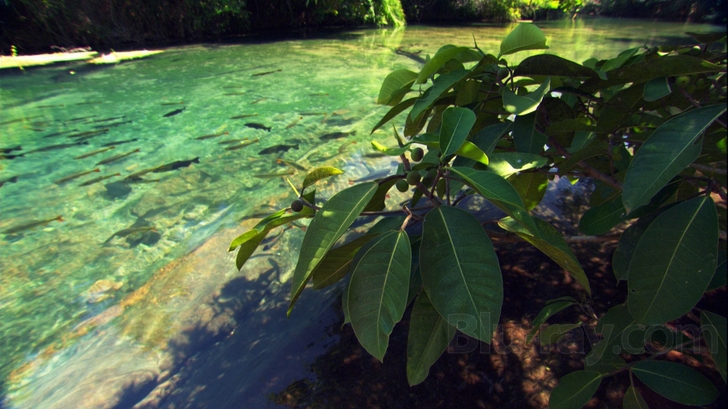
A hundred years ago, there were one-and-a-half billion people on Earth. Now, over six billion crowd our fragile planet. But even so, there are still places barely touched by humanity. This series will take you to the last wildernesses and show you the planet and its wildlife as you have never seen them before.
Planet Earth belongs on everyone's shelf. That's the easy part. Whether you should stick with your 2007 copy or shell out enough cash to upgrade to the 2011 6-disc Special Edition release is a bit more complicated. If you're a stickler for 1080p, the use of a 1080i presentation may frighten you away. Don't let it. Yes, the series suffers a slight downgrade in terms of video, but it isn't all that apparent when the episodes are in motion. (Key words: "all that.") The decision to add it to your cart or walk away, then, really comes down to a different matter altogether: how much is a (still lossy but higher bitrate) DTS-HD High Resolution 5.1 surround track and thirteen hours of special features and bonus documentaries worth to you? If money is no object, add both to your shelf. It isn't a perfect best-of-both-worlds scenario, but it'll do. If money is tight, you might want to hold off for a sale (unless you're a true supplemental junkie, in which case you may want to ready your credit card). Either way, fans and newcomers alike will be pleased with the 6-disc results and, I would imagine, feel their hard-earned high-def dollars have been well spent.
Other editions
Planet Earth: Other Seasons

Planet Earth
The Complete Series
2006

Planet Earth
US Discovery Channel Edition
2006

Planet Earth
The Complete Series | Limited Edition
2006
Similar titles
Similar titles you might also like

Life
BBC / Narrated by David Attenborough
2009

Planet Earth II 4K
2016

Human Planet: The Complete Series
BBC
2011

Galápagos
2006

Earth: The Biography
2007

Ganges
2007

Frozen Planet
The Original UK Series
2011

Nature's Most Amazing Events
2009

Wild Pacific
2008

Wild China
2008

HOME
2009

Earth: One Amazing Day 4K
2017

Grand Canyon Adventure: River at Risk 3D
IMAX 3D
2008

Blue Planet II 4K
2017

Wonders of the Solar System
2010

Blue Planet
Double Feature with The Dream is Alive
1990

Under the Sea
IMAX
2009

Earth
Disneynature
2007

Seven Worlds, One Planet 4K
2019

The Universe: The Complete Season Seven
Ancient Mysteries Solved
2013